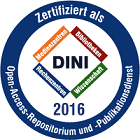Hosni, Sana: Intrinsic and extrinsic mechanisms involved in treatment resistance and progression of bladder and prostate cancers. - Bonn, 2025. - Dissertation, Rheinische Friedrich-Wilhelms-Universität Bonn.
Online-Ausgabe in bonndoc: https://nbn-resolving.org/urn:nbn:de:hbz:5-81259
Online-Ausgabe in bonndoc: https://nbn-resolving.org/urn:nbn:de:hbz:5-81259
@phdthesis{handle:20.500.11811/12851,
urn: https://nbn-resolving.org/urn:nbn:de:hbz:5-81259,
author = {{Sana Hosni}},
title = {Intrinsic and extrinsic mechanisms involved in treatment resistance and progression of bladder and prostate cancers},
school = {Rheinische Friedrich-Wilhelms-Universität Bonn},
year = 2025,
month = feb,
note = {Prostate cancer (PCa) and urothelial cancer (UC) are the most commonly diagnosed urological cancers. Advanced PCa and UC are significant causes of cancer-related deaths. Effective treatment of advanced PCa and UC remains an unmet medical need due to emerging resistance. Therefore, a deeper understanding of resistance mechanisms in advanced cancers is of utmost importance. Resistance could be intrinsic, emerging from the cancer cell itself, or extrinsic, conferred by surrounding non-transformed cells in the tumor microenvironment (TME). This doctoral thesis is based on three publications entitled: 1) “Androgen Receptor Splice Variants Contribute to the Upregulation of DNA Repair in Prostate Cancer”; 2) “CDCP1 Expression Is Frequently Increased in Aggressive Urothelial Carcinoma and Promotes Urothelial Tumor Progression”; 3) “Adipocyte Precursor-Derived NRG1 Promotes Resistance to FGFR Inhibition in Urothelial Carcinoma”. In the first publication, androgen receptor splice variants (AR-Vs) were shown to be increased in advanced PCa compared to primary PCa. AR-Vs in PCa clinical samples were positively associated with increased DNA repair activity. LNCaP cells overexpressing AR-V7 were used as an in-vitro model and confirmed the findings in clinical data. In the second publication, CDCP1 expression was correlated with advanced UC stages and reduced overall survival in two UC patient cohorts. Murine bladder organoids overexpressing CDCP1, and a human BCa cell line, SCaBER, knocked-out of CDCP1 revealed the role of CDCP1 in promoting growth and migration. In the third publication, neuregulin 1 (NRG1) secreted from adipocyte precursor cell lines was shown to confer paracrine resistance to erdafitinib in FGFR-dependent bladder and lung cancer cell lines. Conditioned media from adipocyte precursors was found to activate the human epidermal growth factor 3 (HER3) pathway. Pertuzumab, an FDA-approved antibody that inhibits HER2/HER3 dimerization, was shown to reverse the resistance conferred by NRG1 against erdafitinib in-vitro and in-vivo. Conditioned media from UC-derived cancer-associated fibroblasts (CAFs) corroborated the resistance mechanism against erdafitinib. These studied mechanisms of resistance could pave the way to novel therapeutic strategies aiming at maximizing treatment efficacy and patient survival.},
url = {https://hdl.handle.net/20.500.11811/12851}
}
urn: https://nbn-resolving.org/urn:nbn:de:hbz:5-81259,
author = {{Sana Hosni}},
title = {Intrinsic and extrinsic mechanisms involved in treatment resistance and progression of bladder and prostate cancers},
school = {Rheinische Friedrich-Wilhelms-Universität Bonn},
year = 2025,
month = feb,
note = {Prostate cancer (PCa) and urothelial cancer (UC) are the most commonly diagnosed urological cancers. Advanced PCa and UC are significant causes of cancer-related deaths. Effective treatment of advanced PCa and UC remains an unmet medical need due to emerging resistance. Therefore, a deeper understanding of resistance mechanisms in advanced cancers is of utmost importance. Resistance could be intrinsic, emerging from the cancer cell itself, or extrinsic, conferred by surrounding non-transformed cells in the tumor microenvironment (TME). This doctoral thesis is based on three publications entitled: 1) “Androgen Receptor Splice Variants Contribute to the Upregulation of DNA Repair in Prostate Cancer”; 2) “CDCP1 Expression Is Frequently Increased in Aggressive Urothelial Carcinoma and Promotes Urothelial Tumor Progression”; 3) “Adipocyte Precursor-Derived NRG1 Promotes Resistance to FGFR Inhibition in Urothelial Carcinoma”. In the first publication, androgen receptor splice variants (AR-Vs) were shown to be increased in advanced PCa compared to primary PCa. AR-Vs in PCa clinical samples were positively associated with increased DNA repair activity. LNCaP cells overexpressing AR-V7 were used as an in-vitro model and confirmed the findings in clinical data. In the second publication, CDCP1 expression was correlated with advanced UC stages and reduced overall survival in two UC patient cohorts. Murine bladder organoids overexpressing CDCP1, and a human BCa cell line, SCaBER, knocked-out of CDCP1 revealed the role of CDCP1 in promoting growth and migration. In the third publication, neuregulin 1 (NRG1) secreted from adipocyte precursor cell lines was shown to confer paracrine resistance to erdafitinib in FGFR-dependent bladder and lung cancer cell lines. Conditioned media from adipocyte precursors was found to activate the human epidermal growth factor 3 (HER3) pathway. Pertuzumab, an FDA-approved antibody that inhibits HER2/HER3 dimerization, was shown to reverse the resistance conferred by NRG1 against erdafitinib in-vitro and in-vivo. Conditioned media from UC-derived cancer-associated fibroblasts (CAFs) corroborated the resistance mechanism against erdafitinib. These studied mechanisms of resistance could pave the way to novel therapeutic strategies aiming at maximizing treatment efficacy and patient survival.},
url = {https://hdl.handle.net/20.500.11811/12851}
}






